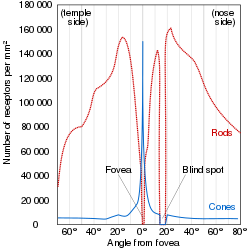mutantsushi said:
Can you specify what is annoying?
This thread is full of people who have a hard time distinguishing between checkerboard and true 4k.
VR foveated rendering is talking about discarding 90% of info outside of narrow circle,
but the concept here is retaining the full 50% of checkerboarded info in that area.
If anything, some level of subsconscious awareness of difference in detail may re-enforce feeling of immersion,
by re-inforcing transfer of POV whereby you naturally use POV swivelling whenever possible when glancing around.
Obviously, there is no need for "sharp" borders of these areas, it is choosing specific pixels to render (vs. interpolate),
so the "full render zone" graduates outward (towards full 50% checkerboard, whose full-render pixels alternate each frame)
Anyhow, I'd be interested on other takes on what else could be "between" pure 50% checkerboard and true 4K,
since there is no longer a simple step like 720p->900p->1080p in standard upscaling.
I guess with the color subsampling idea, color is checkerboard rendered, while brightness is rendered true 4k = 2/3 load?
|
He's right though. That can work dor VR because of how close the screen is to your eyes. What part of the image falls into what would have been your peripheral vision is never going to be in focus unless you deliberately roll your eyes all the way over to one side or the other. But usually you would b focused on the centre of the screen.
On a TV however, even if you are looking at specific things the entire screen is within view and they wouldn't have any meaningful way to track your eye movement in relation to where exactly on the screen you are focused on. So where in VT they could track your eyes and give the part if the screen they are focused on Full rez, on a TV the best they could do is track your cursor... so what happens if you decide to focus your eyes on the edge of the screen without moving the cursor?
As for the color depth thing, the amount of processing required to go from a 8-10bit color depth to support HDR isnt that much. The problem has just been that TVs didn't support it all this time as the level of brightness a TV would need to make those differences noticeable werent achievable at the time. it's the reason why one of the key specifications of HDR support is a display that can go up to 1000nits of brightness and at least 400-500nits of 100% sustained brightness.
And as for what's next between 50% 4kc and 4kn.... my guess would be anything that renders a larger number of real pixels per frame. As it stands the PS4pro renders 4M of the 8M pixels that makes up a native 4k image then using the checkerboard tech reconstructs the other 4M. If you could render 6M Pixels (75% 4kc) in a checkerboard pattern then that leaves you with only 2M pixels to reconstruct. The end product would be an image better than 50% 4kc.
This could be something that the scorpio could do with ease if it's psecs holds true. Though I have no idea exactly what sony's patents would stop them from doing. My guess is that it only stops them from making the same kinda customizations to their APU. But they should still be able to do it in software.
manny10032 said:
really would like to see this because Im not impressed buy the up scaling of the Xbox one s |
This is nothing like the XB1s upscaling. That's a straight upscale where one pixel is basically attached to occupy 4 pixels then sharpened artificially amongst other things to improve sharpness and mitigate ghosting...etc.


















































